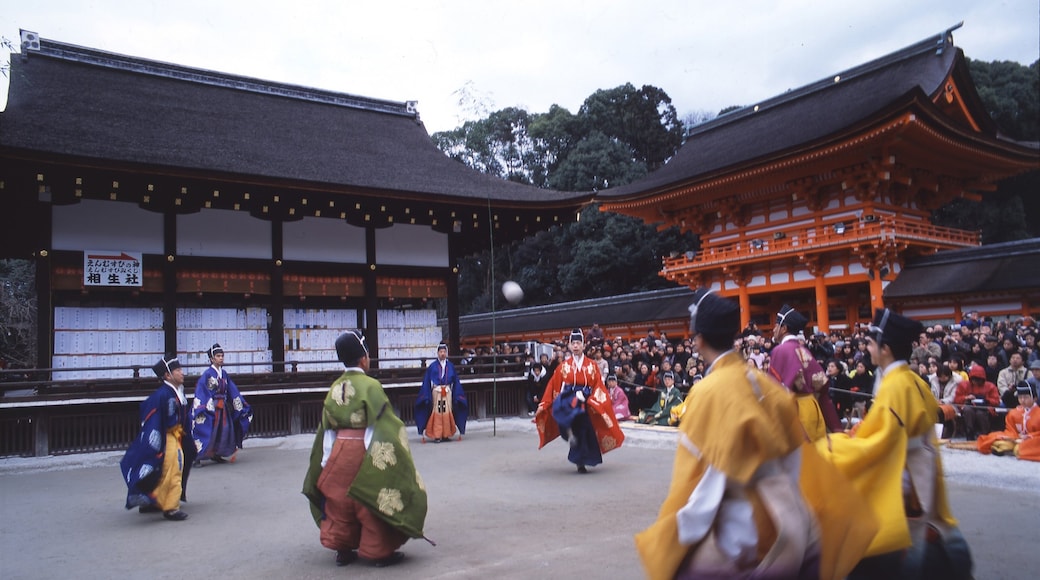This site is one of the two oldest shrines in the city of Kyoto. It is part of the Kamo Shrines, which are considered extremely significant as they pre-date the city itself. Even the site’s surviving trees date back to the 15th century. It is listed as one of the 17 Historic Monuments of Ancient Kyoto.
Visit the traditional main halls with their sloping roofs. They are dedicated to deities. Wander the large grounds to see the seemingly countless shrines on the site. Find the Mitarashi Shrine and its large pond where autumnal purification ceremonies take place. Head to the red palace, which is surrounded by clay that may have been used for ceramics many years ago.
Marvel at the 600-year-old trees of the Tadasu no Mori forest surrounding the shrine’s complex. Walk across the Taikobashi Bridge to enjoy the greenery of the surrounding trees. The forest is on a river delta, encouraging the lush, green landscape. Visit the shrine in spring to make the most of the cherry blossom trees. Take photos of the most famous tree, which stands in front of the forest’s vermillion gate. The woods cover an area of 30 acres (12 hectares).
The site’s name means “Lower Kamo Shrine,” which stresses its important link with the Kamigamo Shrine. Of the two, Shimogamo is believed to be the oldest, possibly dating back to the 6th century. It is dedicated to deities and spirits. During Kyoto’s reign as Japan’s capital, the imperial family designated it as a site of protection and prosperity.
The shrine sits in the north of Kyoto, between the Takano and Kamo rivers. Demachi-Yanagi Station is 0.7 miles (1.1km) away on foot. It is on the Keihan Line of the city’s subway. Buses run regularly to Shimogamojinja-mae bus stop, right by the shrine.











